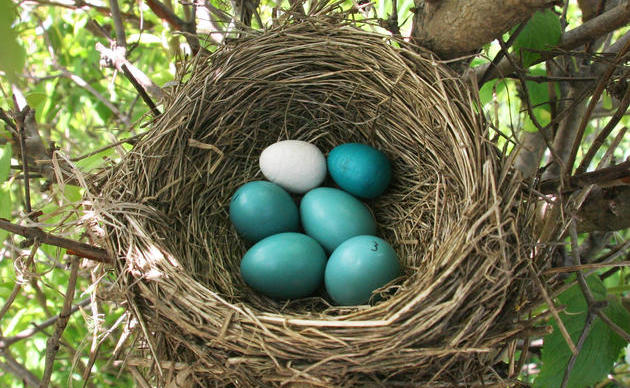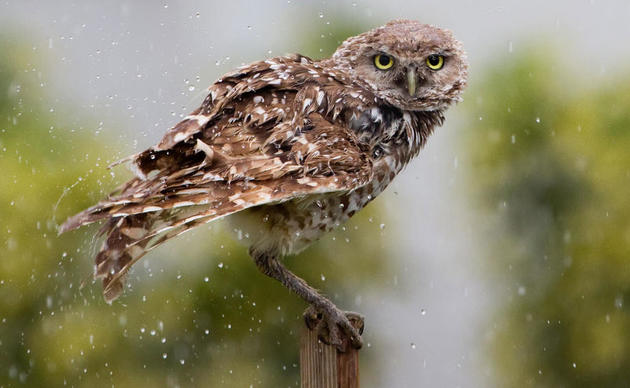Audubon recently added the Delaware River Watershed to its national Water initiative, joining iconic ecosystems including the Great Lakes and Florida’s Everglades.
Everyone lives in one, but what, exactly, is a watershed? Simply put, it describes the area of land that feeds a particular waterway, like a stream, river, lake or wetland.
In the case of the Delaware River Watershed, rain that falls and water that runs in streams throughout 13,500 square miles across parts of New York, New Jersey, Delaware, and Pennsylvania eventually makes its way into the Delaware River and Delaware Bay. Along the way, small waterways grow and form larger tributaries including the Lehigh, Schuylkill and Christina Rivers.
To be sure, the Delaware River Watershed has had its ups and downs since 1651, when the river was first named for Thomas West, Lord De La Warre. It once teemed with shad, sturgeon and steamboats, and later harbored so-called dead zones where the river was unable to support fish and other aquatic life.
But in the 20th Century, a wave of state and federal environmental regulation, notably the Clean Water Act, and regional partnerships like the Delaware River Basin Commission, marked a critical turning point for the watershed.
Just this month, the Delaware River was named 2020 River of the Year, in recognition of its improved water quality, ecosystem restoration and community revitalization.
As we celebrate this success, our work continues. Climate change, excessive stormwater, invasive species, wetland loss and water pollution all pose unique challenges to the watershed’s health for birds and people. Read on to learn more about how Audubon is protecting the Delaware River Watershed here.
Audubon’s vision for the Delaware River Watershed is a system where resilient communities thrive alongside priority bird species. The watershed will have habitat of sufficient quantity and quality, achieved through natural infrastructure, restored streams and wetlands and strong policies to protect the watershed’s natural resources.
Our watershed provides a valuable resource -- drinking water -- to over 13 million people, including 4.5 million residents of New York City and 1.5 million residents of Philadelphia.
In addition, the watershed provides important year-round habitats and migratory stopover sites for hundreds of bird species, including Audubon’s twelve watershed focal species.
Progress Through Partnerships
Collaboration has always been the key to success in improving habitat conditions and water quality for drinking, fishing and recreating, with the federal Clean Water Act remaining a powerful tool for improving and protecting the watershed.
In leading Audubon’s Delaware River Watershed Program, Audubon Pennsylvania is bringing together expertise from Audubon New York, the John James Audubon Center, the Discovery Center, and our watershed chapters: Delaware Audubon Society; Bucks County Audubon Society; Valley Forge Audubon Society; Wyncote Audubon Society; Lehigh Valley Audubon Society; Washington Crossing Audubon Society; Northeastern Pennsylvania Audubon Society; Gifford Pinchot Audubon Society; Sullivan County Audubon Society; and Orange County Audubon Society.
Through programs like the Delaware River Basin Restoration Program, Delaware River Watershed Initiative, Coalition for the Delaware River Watershed, Alliance for Watershed Education and Kittatinny Ridge Coalition we are forging ahead, along with over sixty external partners, to educate students, engage communities and businesses, enhance habitats, and advocate for greater protections and funding.
Our watershed program focuses on the nexus of habitat and water quality, targeting key federal, state and interstate policies, including long-term funding for the Delaware River Basin Restoration Program, the Delaware River Basin Commission and key conservation programs in the watershed states.
We reinforce this policy work by implementing on-the-ground conservation projects that show impact across the 13,500 square miles of the watershed and improve outcomes for our twelve watershed priority species.
And Audubon draws on the strength of its network, truly “local everywhere” to engage a diverse audience in conservation about the watershed we share.
The River Unites Us
The Delaware River Watershed crosses multiple human-made boundaries, which poses a challenge to keeping it healthy. Rivers and streams freely cross over municipal, state and even international borders. Often they are themselves the border. This is true for most of the Delaware River; If you stand on one bank of the Delaware, you are most likely looking at another state.
To increase our sense of community for this shared resource, the Delaware River Basin Commission recently launched “Our Shared Waters” as a fresh take on the watershed we all share. Audubon Pennsylvania is a proud partner in this effort.
Have you been spending more time exploring the outdoor spaces of our Delaware River Watershed recently, while maintaining social distancing? We want to hear your stories and see your photos! Tag @AudubonPA and @oursharedwaters on social and use the hashtags #DelRiverWatershed and #oursharedwaters.
Not sure if you live in the Delaware River Watershed? Find out here!
Acknowledgements
Our work in the watershed is generously supported by the William Penn Foundation, the Pennsylvania Department of Conservation and Natural Resources, the National Fish and Wildlife Foundation, additional foundations and donors – just like you!




